7 days tour from Tangier, The Ancient Protectorates
Art Culture and Traditions Desert Adventure Gastronomy History and architecture Imperial Cities Nature and Landscapes Nightlife Relax and Leisure
Travel itinerary
Day 1 - Tangier - Caves of Hercules - Asilah (1h driving time approx.)
Day 1 - Tangier - Caves of Hercules - Asilah (1h driving time approx.)
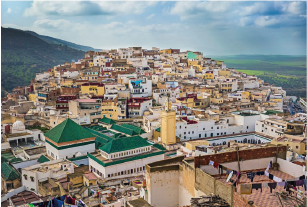
Día 2 - Asilah - Rabat (2h 30min de conducción aprox)
Día 2 - Asilah - Rabat (2h 30min de conducción aprox)
The old Portuguese town of Arcila is very picturesque. Its architecture is beautiful, there is a mausoleum of a Moroccan saint, wonderful views of the sea and many wall paintings by local artists.
Rabat was founded in 1150 by Sultan Abd al-Mu’min, who built the fortress that protected the city. It is the current capital of the Kingdom of Morocco and had already been an imperial city in 1660 and the capital of the country between 1912 and 1956, during the French protectorate. Rabat is currently a world heritage site according to UNESCO since 2012, inscribed as “Rabat, modern capital and the historic city”. We will visit two of the most important monuments of Rabat: the Hassan Tower, on the ruins of the mosque built by Ya’qub al-Mansur and destroyed during an earthquake in 1755; the beautiful Mausoleum of Mohammed V, where is the tomb of King Mohammed V, his son King Hassan II and his brother Moulay Abdellah.
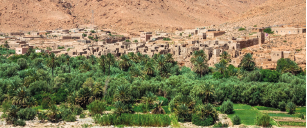
Day 3 - Rabat - Meknes - Fez (3h of driving approx)
Day 3 - Rabat - Meknes - Fez (3h of driving approx)
Departing from Rabat, the road continues to Meknes, the most modest of Morocco’s imperial cities. It is therefore much quieter and more relaxed. To feel it, you have to stroll in the Place el-Hedim, the center of public and cultural life in the city. One of the key sights of Meknes is the Mausoleum of Mulay Ismail, where the tomb of the sultan who gave birth to modern Morocco is located. Other highlights are the Bab el-Mansour Gate, the Dar Jamai Museum, the Bou Inania Madrasa…
Meknes is surrounded by agricultural fields. A curious fact, because Muslims do not usually drink alcohol, is that this region produces the largest amount of wine in Morocco.
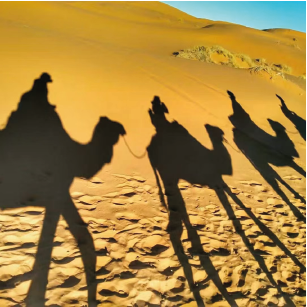
Day 4 - Fez
Day 4 - Fez
Fez is the oldest city in Morocco. Founded in 808, it was the capital of the kingdom several times. The labyrinth of streets of the preserved medieval city (called Fez el-Bali) is considered the largest urban area in the world where cars cannot circulate. It transports us to a completely different world. Movie-like. There are two more parts of the great city of Fez besides the medina. The 13th-century city (Fez el-Jedid) and the Ville Nouvelle (where the business center is located, with modern roads, hotels, and restaurants).
The highlights in Fez are undoubtedly the medina, the souks (markets), the area where the leather tanners are, the Royal Palace, the Mellah (old Jewish quarter), and the oldest university in the world Karaouin.
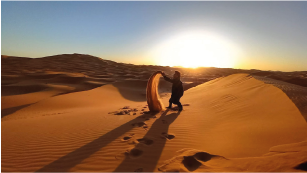
Day 5 - Fez - Chefchaouen (4h driving approx.)
Day 5 - Fez - Chefchaouen (4h driving approx.)
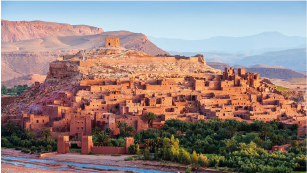
Day 6 - Chefchaouen
Day 6 - Chefchaouen
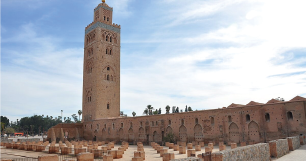
Day 7 - Chefchaouen - Tetouan - Tangier departure (3h driving time approx.)
Day 7 - Chefchaouen - Tetouan - Tangier departure (3h driving time approx.)
Drive to the Spanish-Moorish city of Tetouan, a mixture of cultures. The medina is part of the Unesco World Heritage of Humanity. It is a beautiful and authentic place, with markets in the streets, leather tanning and lots of life. In the Mellah (Jewish quarter), also called little Jerusalem, the guilds are very well defined. Tetouan is known for its importance for the craft trades. You should visit the Museum of Moroccan Arts to learn more about them. Another important cultural building is the Archaeological Museum.
The route ends in Tangier, the city in the north of Morocco that is usually the entrance and exit of this country. The beginning or the end of the mystique of Africa. The old medina is very interesting and the views over the sea are very beautiful.
Transfer to the port or airport and end of our services.
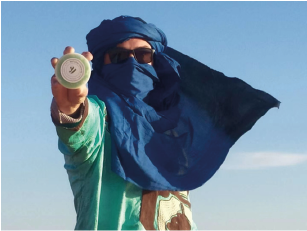
The reservation according to budget includes:
- Private tour, there will be no other people in the group.
- Pick up at the hotel, Riad, airport, or wherever you want.
- Transportation during the trip in an all-terrain vehicle with AC.
- Spanish-speaking driver / guide
- Fuel for the 4X4
- Half board accommodation in hotels and Riad.
- Camping in tents
- Camel ride in the dunes of Erg Chebbi (one per person).
- Dinners and breakfasts.
The reservation does not include:
- Flights
- Midday meals
- Drinks
- Entrance fees to kasbah
- Tips and what is not in the program.
